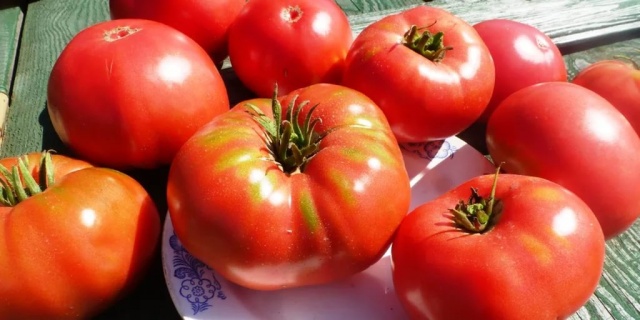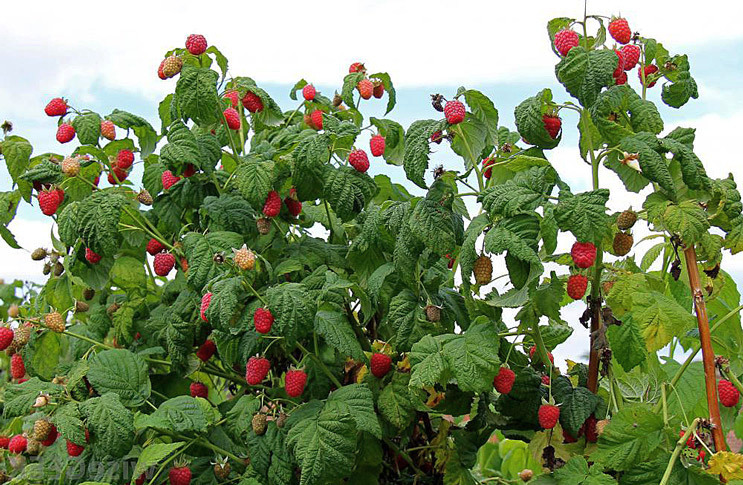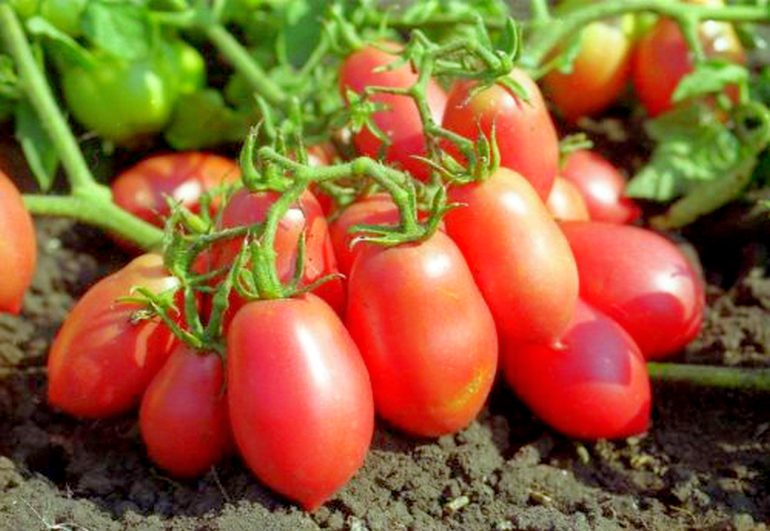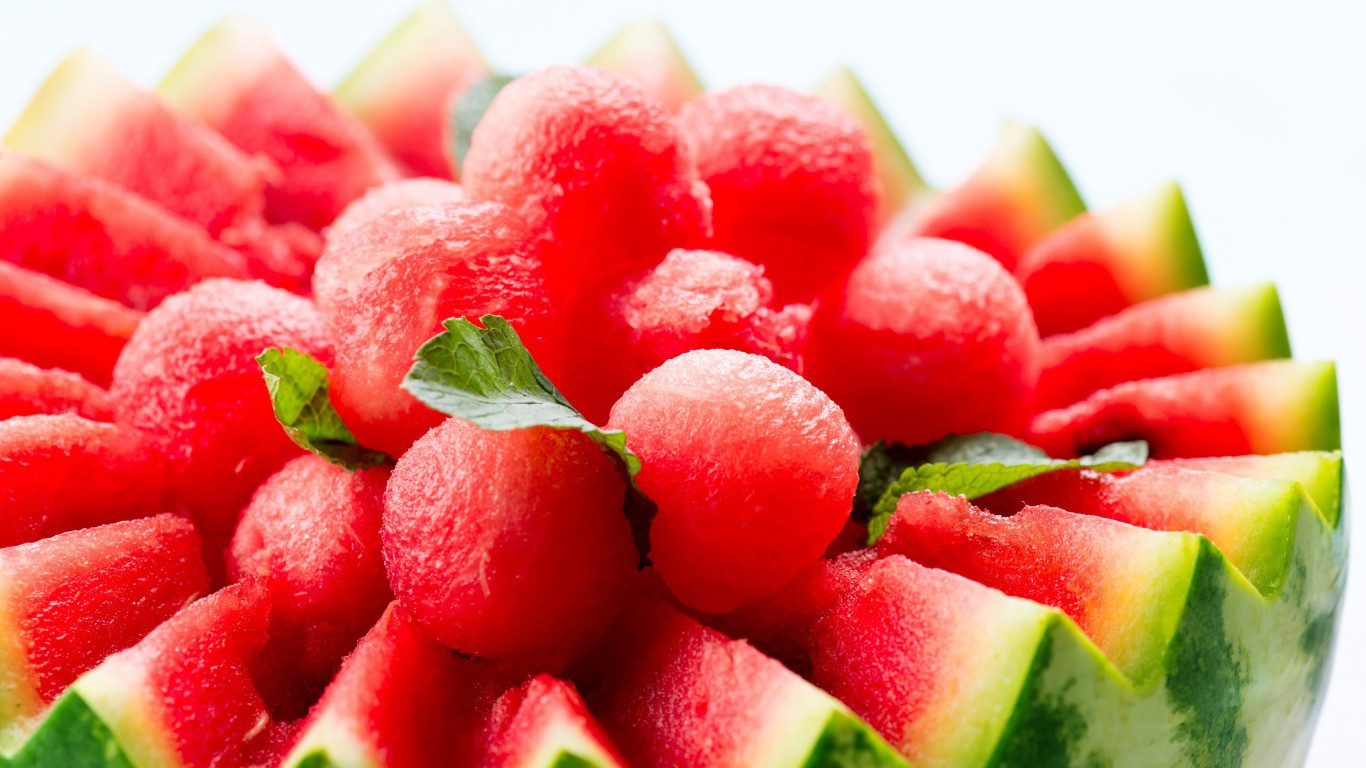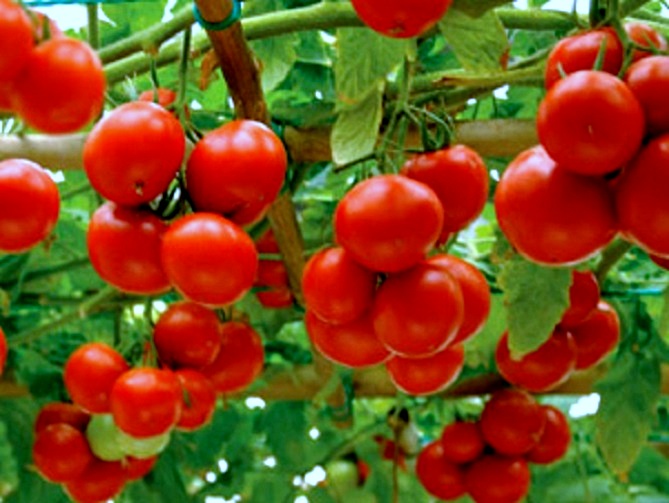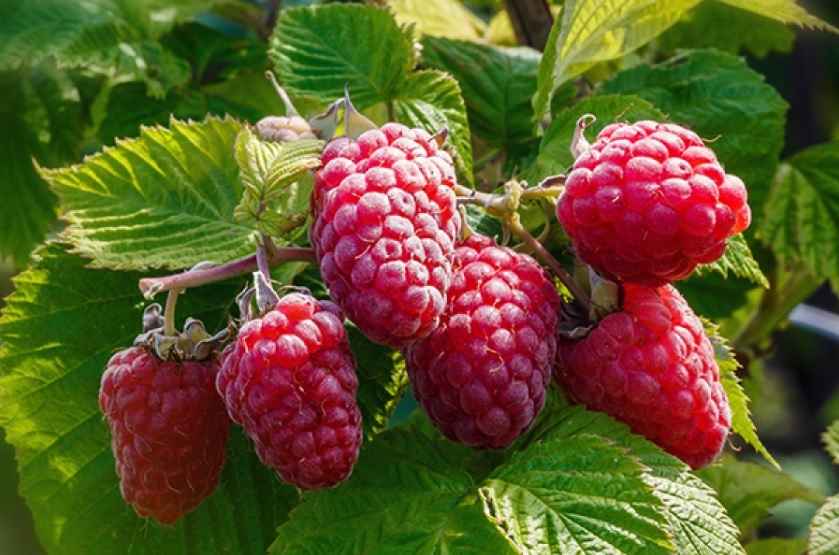Content:
A large-fruited raspberry variety, adapted to hot summers and harsh winters, was named the Pride of Russia. Due to the vitality of the bush, great growth potential and high yield, the variety is popular among Russian gardeners. Raspberry Pride of Russia has outstanding characteristics.
Main characteristics
The first crop can be harvested in the first decade of July. The plant finishes bearing fruit at the end of summer. Not a remontant, early ripening variety that does not require special care.
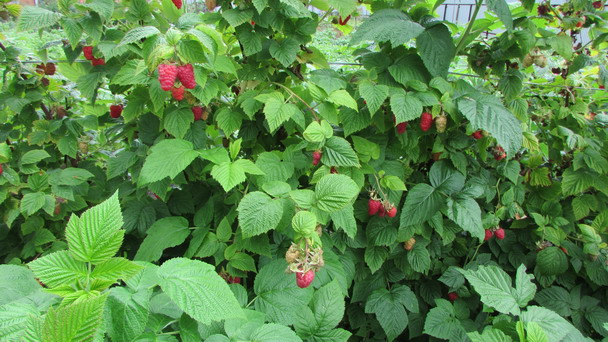
Characteristics of raspberries Pride of Russia
Description and characteristics of the raspberry variety Pride of Russia:
- A shrub with a strong root system. Shoots reach up to 1.5-1.8 m in length. There are no thorns on the bushes. The leaves are dark green in color, the surface is rough;
- On a fruit branch there can be up to 20 large, bright red berries, cone-shaped;
- Moderate number of shoots, 5-7 substitution;
- The average weight of one raspberry is 8-10 g, with proper feeding of the bush, the weight can be up to 20 g (large-fruited). Double berries may occur. From one bush of the Pride of Russia variety, you can collect up to 5 kg of berries, the number of harvests - up to 6 times per season;
- Raspberry pulp has a delicate sweet and sour taste, the bones are very small. It is convenient to pick the berries, they are easy to remove from the stalks. Raspberries do not crumble even when fully ripe;
- The plant is resistant to various diseases (fungal infections, chlorosis, mosaic), sometimes it is affected by aphids. The variety is frost-resistant (up to minus 30 C), it is recommended to bend down the shoots for the winter. With prolonged drought, it bears fruit with large berries;
- Lack of regular soil moisture affects the taste of ripe raspberries.
A large harvest for the season, large tasty berries, resistance to many diseases made the Pride of Russia variety in demand among gardeners.
Planting raspberries
Saplings of the Pride of Russia variety must be planted in the spring or autumn. When planting a plant in the autumn, it is necessary to lay the bushes and cover with agrofibre for the winter. Until spring, they will take root and get stronger, so autumn planting is preferable to spring planting.
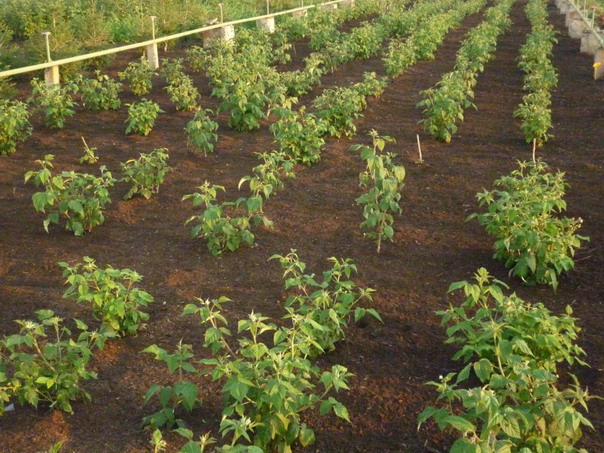
Planting seedlings
It is important to prepare the soil before planting the plant. The recommended soil for the normal development of the bush is loamy, the soil should be with humus. The site must be cleared of weeds, the soil must be loosened and fertilized (5-7 kg of humus per 1m2 of land).
On a note. It is undesirable to plant bushes of the Pride of Russia variety in open areas, in ravines. Gusts of wind and constant drought will negatively affect future crops.
Disembarkation instructions:
- Make holes for the bush. Recommended width and depth - up to 0.5 m. The distance between them should be half a meter. Make rows at a distance of 1 m to each other;
- Fill each well 2/3 full with humus. The seedling is placed in the middle of the hole, the roots must be carefully straightened, sprinkled with earth;
- After planting, each bush should be watered with three liters of water. From above - sprinkle a little humus (you can use special sawdust), this will protect the roots, retain moisture in the ground.
The Pride of Russia variety is propagated in several ways:
- Apical layering;
- Root offspring;
- Cuttings.
After planting, the variety quickly takes root and gives new shoots. They are used for seating.
Raspberry care Pride of Russia
The variety does not require special care; it is enough to perform general manipulations with the plant. Recommendations:
- Keep the site in order, get rid of weeds in a timely manner;
- Water the bushes regularly, loosen the ground, sprinkle with fertilizers;
- In early spring and mid-autumn, make a few pruning.
In April, dry, weak, broken branches must be removed. Each shoot is cut with pruning shears or garden shears to the first swollen bud. To increase yields, re-pruning is carried out after the buds have bloomed. Each stem is shortened by another 15 cm.
One more pruning is necessary for the winter period. The event is held in mid-autumn, before the first cold weather. The pruner is removed:
- Sick or old stems;
- Branches that thicken the bush;
- A shoot bearing fruit for 2 consecutive years.
Raspberry Pride of Russia is considered frost-resistant, but it is advisable to cover the plant for the winter. Preparation for frost begins in late autumn.
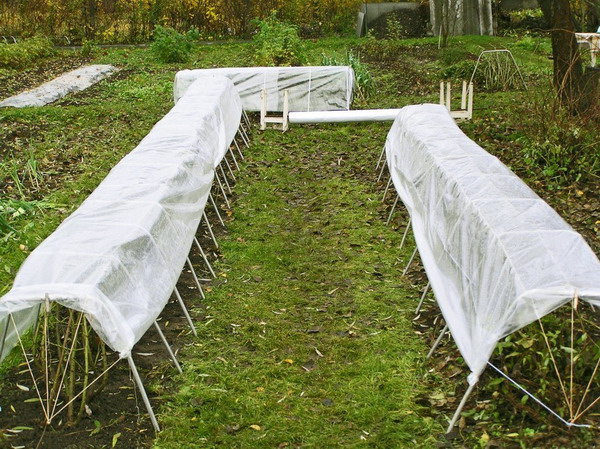
Preparing for the winter period
It is necessary to insert pegs into the ground along the bushes. It is necessary to pull the wire on them at a height of 30 cm from the ground. Each raspberry stem is carefully tilted to the ground and fixed on the wire with a nylon thread. Shoots should be in the shape of an arc. Agrofibre is laid on top of the bushes. It turns out a neat mini-greenhouse for raspberries, which will protect each stem from severe frosts.
How to water raspberries
Raspberry The pride of Russia is a moisture-loving variety. Lack of water affects the taste of berries, therefore, during the season, the gardener should carry out the following types of watering:
- At the beginning of flowering;
- During the ripening period of berries;
- After completing the collection of raspberries;
- Until the winter frost.
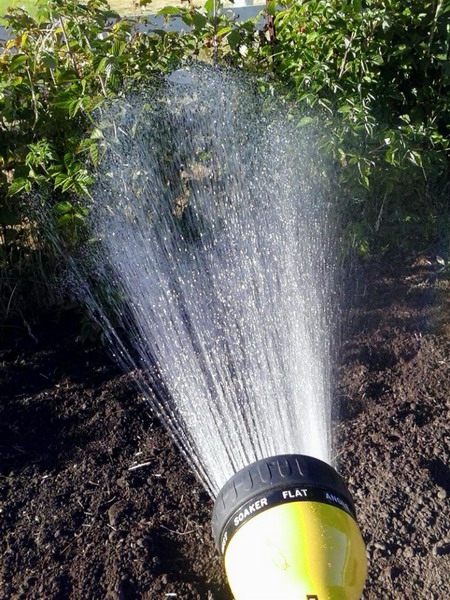
Watering Tips for Raspberries
The optimal irrigation system for raspberries is drip irrigation. After watering, the land around the bush is fertilized, the soil is mulched with straw or sawdust.
Every year the plant is fed with manure, superphosphates. After harvesting, wood ash and phosphorus-potassium fertilizers are applied.
How to store crops
The variety has a high yield of large berries. On an industrial scale, using agricultural techniques, up to 18 tons of raspberries are harvested per hectare per season. Methods for storing ripe berries:
- To preserve the berries, they are stored in a cool place. Recommended temperature - from 0 to +5 degrees, humidity - 90%. Raspberries can be transported, the berries will remain fresh and beautiful to look at. Refrigerated shelf life - 3 days;
- One of the ways for long-term storage of berries is shock freezing. Frozen raspberries can be stored for up to 7 months;
- Raspberries are dried using a drying oven or naturally. After drying, the berries are placed in cotton bags. Store at room temperature in a dry ventilated place.
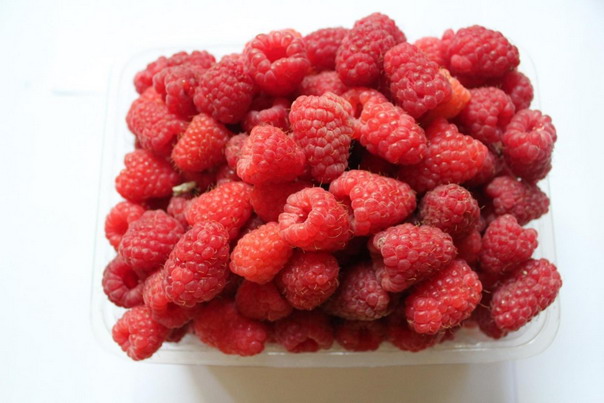
Harvest storage methods
Advantages and disadvantages
The Pride of Russia variety has many advantages. The pluses include:
- Large-fruited variety, early fruit ripening;
- The novelty is distinguished by tasty pulp, small bones;
- The variety is resistant to different weather conditions;
- After ripening, raspberries do not crumble;
- There are no thorns on the stem;
- The plant multiplies easily;
- The raspberry bush is unpretentious to care for;
- The plant is resistant to various diseases;
- The main plus is a large harvest every year.
There are several disadvantages:
- Influence of lack of moisture on the taste of berries;
- The need for feeding (an insignificant minus);
- Possibly aphid infestation.
Raspberries are suitable for growing in central Russia. The raspberry variety Pride of Russia receives positive reviews from gardeners, and has long been considered the best variety with high yields and delicious berries.
